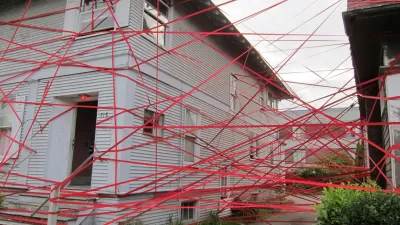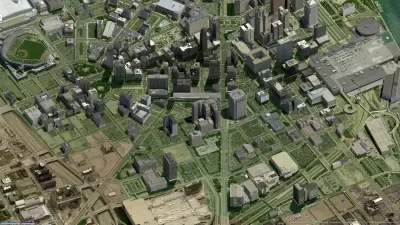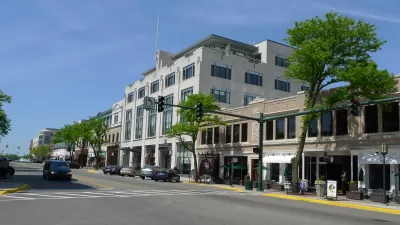“Lean urbanism” is the latest buzz-worthy term to enter the discussion on planning and urbanism. A recent article in Atlantic Cities explains the concept—which appeals to the younger generation as well as those with libertarian leanings.

Anthony Flint recently interviewed Andrés Duany on the subject of “lean urbanism,” which recently received a high level of institutional backing in the form of a $600,000 grant from the Knight Foundation for work in Detroit. For those interested in learning more about lean urbanism, Flint’s interview provides access to this latest concept in the lexicon of planning.
According to Duany, red tape is the problem: “Common sense has been almost completely lost in my profession. There are too many protocols in the way.”
“The lean urbanism concept, he says, is like a software patch, or a workaround – ultimately a guide or a tip sheet to navigate the complicated, and often very expensive, maze of working in the built environment in the U.S.,” writes Flint. Duany describes lean urbanism as “not a philosophical approach, but a narrow seam of activity, a sharing of secret knowledge.”
For how lean urbanism relates to the constellation of concepts by which planners and urbanists organize their ideas, Flint compares the work of lean urbanism to more familiar projects. “Tactical urbanism – the unsanctioned demonstration projects of creating a parklet or ‘chair bombing’ a street – might be thought of as at one end of this spectrum. Groups like CNU, the American Planning Association, the Urban Land Institute and SmartGrowth America are operating at a higher political level, pushing policy reform. Lean urbanism, as Duany defines it, seeks to occupy the space between, helping guide urban development in a more practical manner.”
FULL STORY: Why Andrés Duany Is So Focused on Making 'Lean Urbanism' a Thing

Study: Maui’s Plan to Convert Vacation Rentals to Long-Term Housing Could Cause Nearly $1 Billion Economic Loss
The plan would reduce visitor accommodation by 25,% resulting in 1,900 jobs lost.

North Texas Transit Leaders Tout Benefits of TOD for Growing Region
At a summit focused on transit-oriented development, policymakers discussed how North Texas’ expanded light rail system can serve as a tool for economic growth.

Why Should We Subsidize Public Transportation?
Many public transit agencies face financial stress due to rising costs, declining fare revenue, and declining subsidies. Transit advocates must provide a strong business case for increasing public transit funding.

How to Make US Trains Faster
Changes to boarding platforms and a switch to electric trains could improve U.S. passenger rail service without the added cost of high-speed rail.

Columbia’s Revitalized ‘Loop’ Is a Hub for Local Entrepreneurs
A focus on small businesses is helping a commercial corridor in Columbia, Missouri thrive.

Invasive Insect Threatens Minnesota’s Ash Forests
The Emerald Ash Borer is a rapidly spreading invasive pest threatening Minnesota’s ash trees, and homeowners are encouraged to plant diverse replacement species, avoid moving ash firewood, and monitor for signs of infestation.
Urban Design for Planners 1: Software Tools
This six-course series explores essential urban design concepts using open source software and equips planners with the tools they need to participate fully in the urban design process.
Planning for Universal Design
Learn the tools for implementing Universal Design in planning regulations.
City of Santa Clarita
Ascent Environmental
Institute for Housing and Urban Development Studies (IHS)
City of Grandview
Harvard GSD Executive Education
Toledo-Lucas County Plan Commissions
Salt Lake City
NYU Wagner Graduate School of Public Service




























